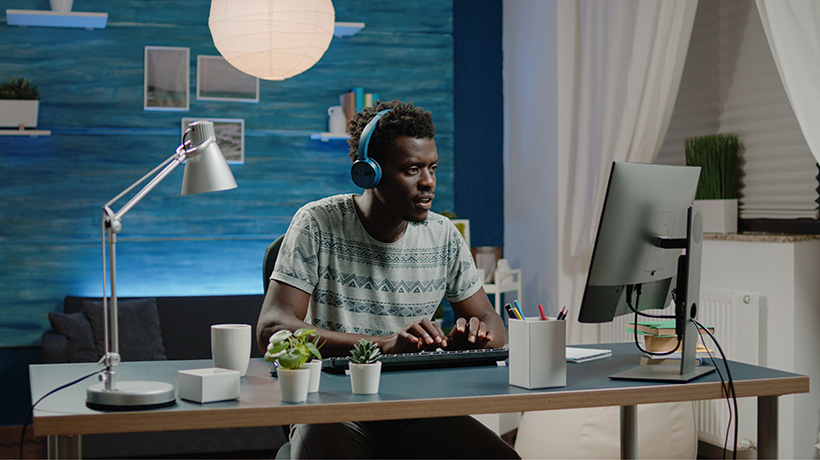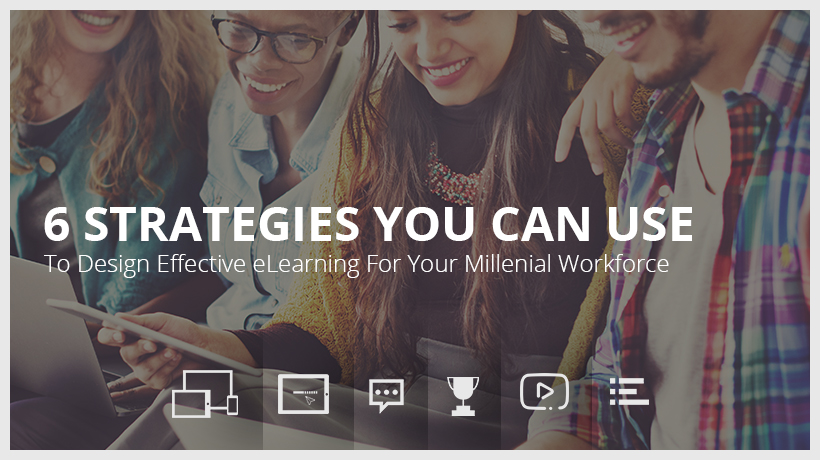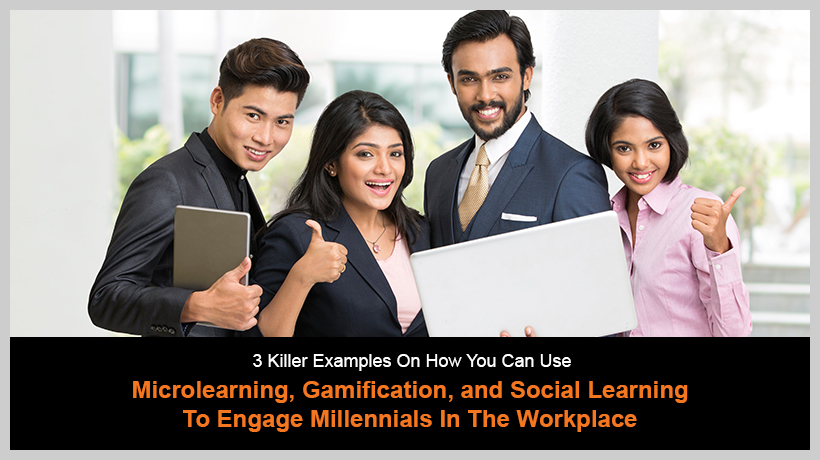
Creating an inclusive culture of belonging in the workplace starts with ensuring equal access to learning. As leaders in corporate learning and development, we have an obligation to make training truly accessible for all abilities. This not only meets legal and ethical requirements but also fosters an environment where everyone can fully participate and excel.
Too often, however, accessibility is treated as an afterthought — creating barriers for employees with disabilities. They may be unable to engage with materials, assessments and critical upskilling opportunities. This impedes professional growth.
As L&D leaders, we must put accessibility at the forefront. This means understanding needs, reducing friction through universal design and continuously improving based on input from disabled users. When learning is barrier-free, it unlocks potential and promotes belonging for all team members.
This blog will explore practical steps and priorities L&D leaders should embrace to make corporate learning welcoming and effective for all. With care and intention, we can build inclusive cultures where each person is valued and empowered with knowledge. The ripple effects on innovation and human potential are profound.
Why Accessibility Matters
Whenever we talk about accessibility or any other dimension of Diversity, Equity, Inclusion and Belonging (DEIB), it’s easy to focus on the compliance component. There is a regulatory requirement to be met, depending on your location. That is critically important for any business — so, of course, ensure you are complying with all relevant laws, regulations and statutes in every geography for which you are responsible for learning.
Beyond compliance, though, is the actual business case. It is estimated that as many as one in four adults of working age deal with some form of disability inclusive of learning differences. Isolate less affluent economies, and that number goes up. Simply put, if 25% of your workforce is unable to interact successfully with the learning content you are asking them to complete to ensure successful business outcomes, you may never achieve more than 75% of your intended targets.
Obviously, that is a generalization and not a universal law. If that number is only 5% or 10%, you are inadvertently at best, and intentionally at worst, creating an environment where your workforce may not be able to be successful. Over time, that will hurt results, reputation, talent retention and employer branding.
Most companies endeavor to be responsible corporate citizens. A great deal of effort and money have gone toward ensuring that a business is doing right by their workers, their customers and their communities. Accessibility in learning delivers on those promises by creating more equal opportunities and allowing for full participation of the workforce.
Common Accessibility Barriers In Corporate Learning
Most learning in corporate settings is delivered through some form of digital media. In fact, Brandon Hall Group™ research shows that digital learning modalities, including web-based eLearning, video, eBooks, simulations and games, account for 80% of all learning content. Because of this, consideration of the accessibility of that content for individuals who fall under the broad umbrella of disabled must become a core practice.
The good news is that standards, guidelines and evaluation/testing criteria already exist, so there isn’t a need to solve this in any sort of vacuum. Brandon Hall Group™ Smartchoice™ Platinum Preferred Provider EI powered by MPS lays out the common language around accessibility as defined by the Web Content Accessibility Guidelines (WCAG). These guidelines are arranged under four principles, known collectively as the POUR Principles of Accessibility. EI’s excellent eBook Creating Pathbreaking Learning That is Accessible to All covers this in detail.
Here is a breakdown of the key ideas behind the POUR Principles:
| Perceivable | Operable | Understandable | Robust |
| You want to ensure your content is perceivable, which means your learner is able to consume the content regardless of the way it is being presented. Ensure video clips are captioned for example. | Learners should be able to operate the content. It should be clear how to navigate screens and it should be possible to do so without a mouse or trackball or some other pointing device. | Content should use easily understood language. If there are words that learners are likely to be unfamiliar with, those must be explained and efforts made to minimize excessive formatting of text that may make it harder to read. | If a learner requires the use of assistive technologies such as screen readers or pointing devices for tablets, they should be able to rely on and use all buttons and links successfully, without any glitches. |
Working toward the consistent application of these principles and leveraging the WCAG guidelines will help improve the accessibility of your eLearning content. The consideration you would apply to ensure appropriate access for any live, in-person event should be extended to digital learning content as well.
Steps To Improve Accessibility
The question becomes, then, how exactly do you go about improving the accessibility of your content? Consider these steps:
- Know your learners
- It’s a universal principle of learning strategy and design that you need to understand your audience.
- Include accessibility needs in any learning needs analysis so that is factored in at the beginning.
- Build accessibility organically to avoid re-work.
- Involve people with disabilities for input and testing
- Reach out to employees with disabilities and understand what their experiences have been in completing learning in the past.
- Include accessibility testing as part of your publishing process and quality checks.
- Train your team on accessibility best practices
- Ensure that the team members responsible for designing and authoring content understand accessibility guidelines and best practices.
- Ensure captions, transcripts and keyboard navigability are standard.
- Refer to this insightful post from EI powered by MPS on Accessibility in Learning Design.
- Adopt universal design principles
- Prioritize end-user experience.
- Standards and best practices that are research-based do exist.
- Leverage partners like EI Powered by MPS to help build your capabilities.
- Learn more about Accessibility Standards in eLearning.
- Set clear policies, processes and guidelines.
- Make sure your team and organization understand what the expectations are moving forward.
- Leverage the right tools.
- Choose accessible authoring tools.
- Provide assistive technologies.
- Consider a partner to help establish and audit content and practices.
Building A Culture Of Accessibility
Embedding accessibility awareness and practices into your organizational culture is key to longevity and ongoing success. It starts with a clear commitment from leadership. Make sure that commitments are made and tracked as part of an accessibility review. Accessibility in your work must become a central tenet and not an afterthought. Waiting until you “need” to have accessible content is too late. Leverage the power of feedback loops not only through regular input from learners through your normal processes but intentional conversations with the intended audience as well. Consider leveraging the power of affinity groups or employee resource groups to gather the collective voice of employees with disabilities to help keep your organization honest and moving forward.
As with any change effort, it is a journey and a process — not a destination. The idea is to ensure that every day, in every way possible, your organization becomes more inclusive of all by holding space for and enabling the success of individuals regardless (or perhaps because of) their disability status. Continuous improvement is a critical capability for any business today and it applies to learning and accessibility as much as it does to any other workflow.
Key Takeaways For L&D Leaders
L&D leaders are learners first. As you approach the question of accessibility through your learning offerings, keep the following in mind.
- Help is available in the form of guidelines, standards and testing methodologies. Start with WCAG 2 Overview | Web Accessibility Initiative (WAI) | W3C
- Look to those who have successfully negotiated this process for guidance and inspiration. EI Powered by MPS has great resources to support your journey here: Insights — EI. (In the box marked Solutions, select eLearning Accessibility.)
- Ensure that all new content meets accessibility standards for your organization. Worry about existing content later.
The key is making accessibility central to how your team operates — and not just an afterthought. It requires commitment from the top down and empathy for the learner experience. Ensuring that all learning is impactful moves all employees forward to greater levels of success.



